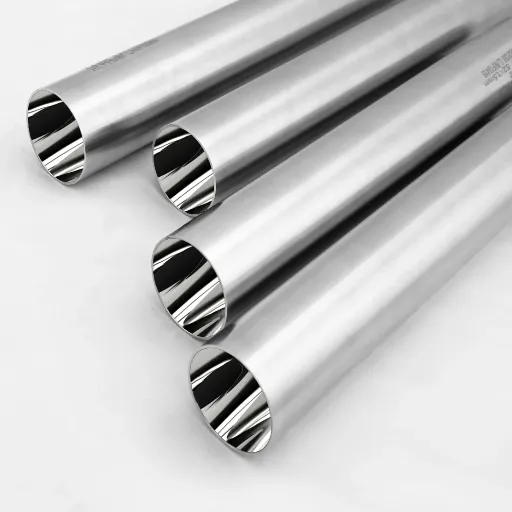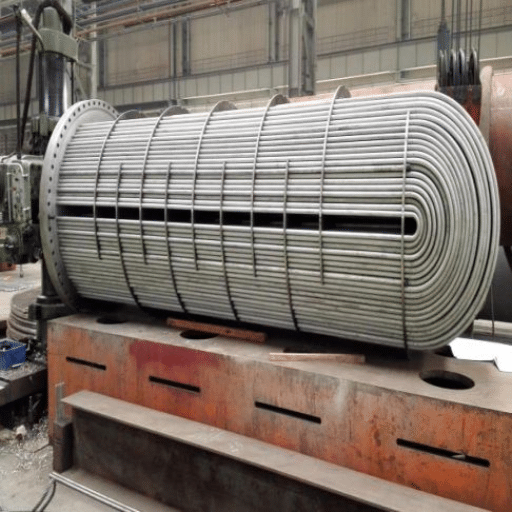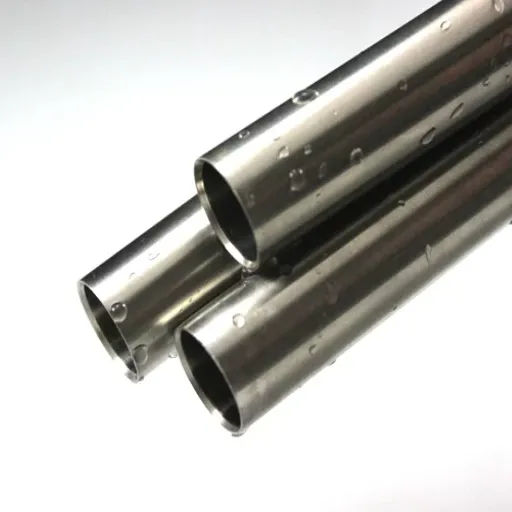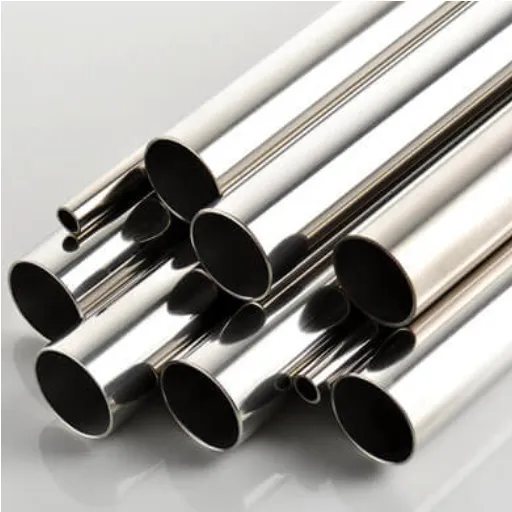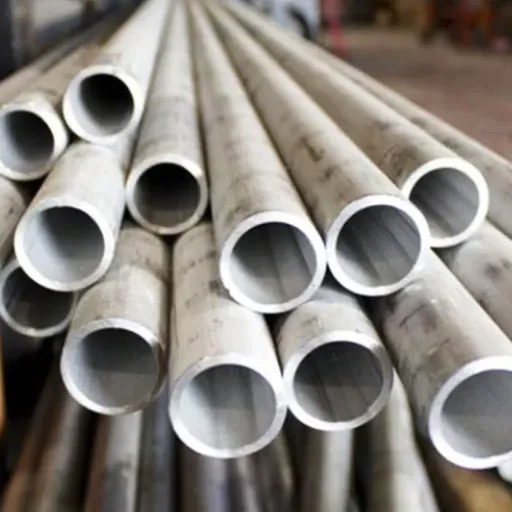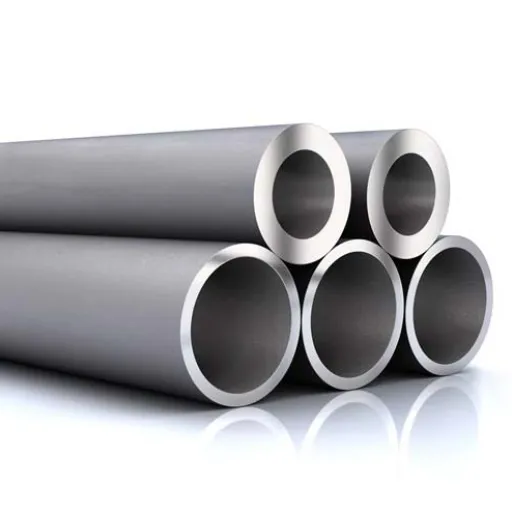Stainless steel pipes are the top choice in many demanding applications due to their exceptional properties like high durability, resistance to corrosion, and wide range of applications in different industries. However, there are different grades of stainless steel pipes and among them, the annealed and pickled ones are the most advantageous in terms of properties and performance. But what does it mean to be “annealed and pickled” and why is it so important? The following article breaks down the complex processes of annealing and pickling and explains how these methods improve the quality and the intended use of stainless steel pipes. You will not only comprehend the treatments but also be aware of the extensive advantages of these pipes in the market and how they can fulfill your particular requirements.
Introduction to Stainless Steel Pipes
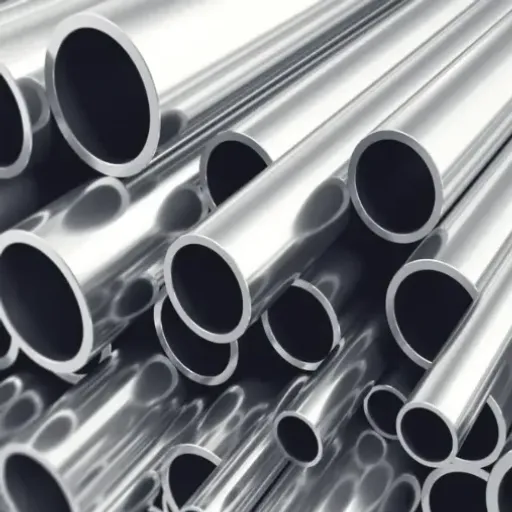
Stainless Steel Materials Overview
Stainless steel is a durable and flexible material that has exceptional resistance to corrosion, strength, and beauty, and it is mainly made of iron, chromium and nickel that varies depending on the specific property required; therefore, the latter is forming the oxide layer that prevents rust and staining on the surface and the material has a concentration of at least 10.5% chromium. The metal is also performing great in other areas such as construction, automotive, healthcare, and food processing besides its unique composition which keeps it in high demand.
🔬 Why Annealing and Pickling Matter
Annealing makes the metal soft, eliminates the internal stress, and gives the metal a higher ductility, therefore, the pipes are easy to shape and the chance of cracking is reduced.
Pickling is a process in which the surface of the material is cleaned, and in doing so, the oxide layer formed during manufacturing is completely removed and thus, the material’s resistance to corrosion is restored.
The combination of the two processes makes it easier for the pipes to perform well, so even if they are under high demand, they don’t get worn out, which is the reason why they are used in modern applications.
Importance of Pipe Selection in Industry
The wrong pipe could mean an industrial application full of risks and even the loss of the application. Oil and gas, chemical processing, and construction are the industries that come to mind when talking about the heavy use of pipe systems; the right choice of material, specification, and type can have a big impact on efficiency and the longevity of the system. Performance and cost-effectiveness in the actual industrial environment will be achieved only after careful evaluation of factors like pressure handling, thermal expansion, and environmental conditions.
📊 Industry Trend Alert
Recent data shows that searches for “corrosion-resistant pipes” and “high-temperature pipe materials” have increased by more than 20% in the last year, indicating growing awareness of durability and specialized requirements.
Stainless Steel Tubes’ Key Properties
The key property of the stainless steel tubes that supports their high demand is corrosion resistance. This characteristic makes tubes a perfect choice for the application in harsh environments where they would be exposed to liquids, chemicals, or extremely high/low temperatures. The presence of chromium is the main reason for this passive and protective layer being formed that eventually translates into durability. Furthermore, the characteristic of stainless steel tubes of being very strong yet light is another reason for their wide application in industries that need such materials which may range from the aerospace sector to the construction one and so on. Tubes are also amazing when it comes to handling heat and pressure, meaning they are not going to break or become inefficient when subjected to challenging operating conditions.
✓ Key Properties Checklist
- ✓ Corrosion Resistance: Perfect for harsh environments with liquids and chemicals
- ✓ High Strength-to-Weight Ratio: Ideal for aerospace and construction
- ✓ Heat Resistance: Maintains performance under extreme temperatures
- ✓ Pressure Handling: Withstands challenging operating conditions
- ✓ Thermal Expansion Management: Adapts to varying temperatures
The Annealing and Pickling Process
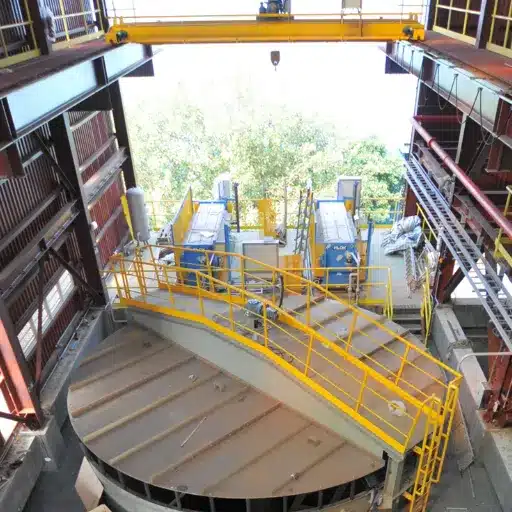
What is Annealing?
Annealing is a heat treatment procedure that adjusts the material’s properties, mainly metals, their ductility being increased and hardness stronger reduced. The material is subjected to a gradual heating manner to a specific temperature, maintained there for a set time, and then usually cooled down very slowly. This treatment reduces the internal stresses, grain size becomes finer, and the material gets better in terms of machinability, forge-ability, or shaping.
🔥 The Annealing Process: Step by Step
- Heating Phase: Material is gradually heated to a specific temperature
- Holding Phase: Temperature is maintained for a set duration
- Cooling Phase: Slow, controlled cooling process begins
- Result: Reduced internal stress, finer grain size, improved workability
There is a lot of evidence nowadays showing that annealing is a very common practice in numerous industries and among them, manufacturers of stainless steel tubes are at the top. This is mainly because the material is able to withstand very high mechanical stresses and unfavorable environmental conditions if its performance is optimized by annealing. One of the major advantages for stainless steel when subjected to this process is that it becomes corrosion resistant wherever there has been welding or deformation; thus, it is a very important step in the making of piping systems that last long and are of high quality.
The Pickling Process Explained
Pickling is an indispensable part of the procedure of treating the surface of stainless steel, which includes the removal of various impurities, oxides, and also scales, that come about as a result of the welding, and the heat treatment, or machining of the stainless steel surface. The metal is soaked in solutions containing acids, usually a combination of nitric and hydrofluoric acids, and that is how the above-mentioned removal process is done. Recent studies show that acid pickling is not only a method of improving the appearance of the steel but also a way to tighten the corrosion resistance of the steel by creating a clean and passive surface layer.
⚗️ What Pickling Removes
- Surface impurities and contaminants
- Oxide layers from welding operations
- Scale from heat treatment processes
- Discoloration from machining
Result: A clean, passive surface layer with enhanced corrosion resistance
New research demonstrates how crucial pickling is to the preservation of stainless steel product integrity, especially when they are used in applications like chemical processing, food manufacturing, or marine environments. By ensuring the removal of impurities and restoring the material’s protective oxide layer, pickling contributes significantly to the longevity and reliability of stainless steel components under demanding operational conditions.
Benefits of Annealing and Pickling
The combination of annealing and pickling yields extraordinary advantages for stainless steel products in demanding industries. Annealing helps in softening the metal by increasing its ductility and reducing the crack-prone internal stresses. On the other hand, pickling does not let this treatment go in vain because; it provides the finished product with no oxide layer, it is free of impurities and has corrosion resistance that is comparable to that of a virgin surface.
💎 Combined Benefits of Annealing & Pickling
Annealing Benefits
- Increased ductility
- Reduced internal stresses
- Improved workability
- Enhanced machinability
Pickling Benefits
- Removes oxide layers
- Eliminates impurities
- Restores corrosion resistance
- Creates passive surface
The data that just came in shows that all industries that use both annealing and pickling processes report a significant increase in material integrity and operational lifespan; thus, chemical processing and marine environments are just some examples of such sectors. This co-working makes sure that stainless steel parts are constantly strong, resistant to harsh conditions, and durable, which ultimately leads to the cutting down of maintenance and downtime costs in the long run. The combination of these techniques is a must for meeting the high-quality standards that the modern manufacturing and engineering worlds require.
Types of Stainless Steel Pipes
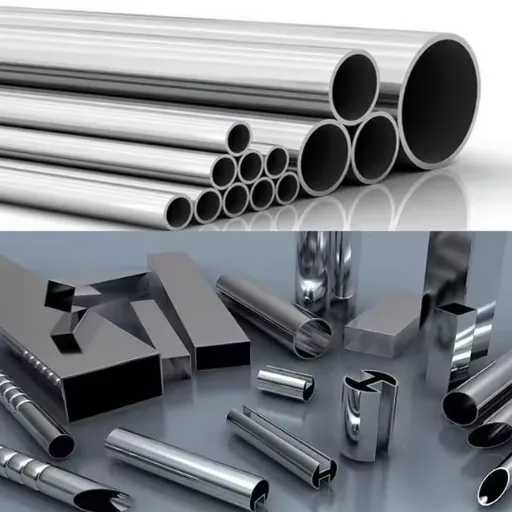
Seamless versus Welded Pipes
The main factor that differentiates between seamless and welded pipes is the method of production, which, in turn, dictates their use, price, and effectiveness. The creation of seamless pipes is carried out via executing the extrusion method, which gives the pipe its complete form without any welded joints. Thus, the manufacturing attributes of these pipes offer them a high degree of strength, consistency, and pressure-resistance that make them suitable for the oil and gas industry, as well as for high-pressure application areas and critical engineering operations. Conversely, welded pipes are produced by taking a sheet of steel and rolling it up into a pipe and then welding the edges together. Seamless pipes might not match welded pipes in terms of resistance to pressure, but in terms of cost, availability in different diameters and lengths, and also in terms of the most common uses in water pipeline, architectural projects, and structural support where the pressure is low, welded pipes are clearly ahead.
Recent reports from the industry indicate that seamless pipes are more widely used than welded ones in situations where extreme durability and reliability under stress are required, whereas the latter still remains the number one choice in cost-sensitive and non-demanding applications. The decision between the two pipe types is determined mainly by the particular project’s technical and financial requirements.
Common Grades: 304, 316L, and Duplex Stainless Steel
304 stainless steel is frequently the most versatile and widely used material that comes with the benefit of excellent corrosion resistance, ease of machining, and price range. It is suitable for the food industry, chemical engineering, and household applications. 316L stainless steel, on the other hand, is more resistant to chloride-induced corrosion, which is why it is predominantly used in the marine, pharmaceutical, and medical industries. As for Duplex stainless steel, it benefits from the combination of austenitic and ferritic steel grades, thus boasting a remarkable degree of strength and an equally outstanding resistance to the source of corrosion cracking by stress. A recent study has shown that these grades are still the favorites in chemical processing, moisture, and varying temperature exposure due to their high performance capabilities. Therefore, the choice of grade becomes vital for project success.
Understanding Pipe Schedules (SCH 10S, SCH 80S)
Pipe schedules specify the thickness of the pipe walls and are critical in determining their pressure-handling capacity and durability; thus, SCH 10S and SCH 80S are classified according to wall thickness. The classification of SCH 10S pipes includes thinner walls, which characterizes them as a good choice for low-pressure environments; these pipes are usually found in applications like low-pressure water or gas systems. Conversely, pipes classified as SCH 80S possess significantly thicker walls that provide high-strength and resistance to pressure; thus, they are indispensable in industries like chemical processing and power generation that operate under heavy-duty conditions.
⚙️ Pipe Schedule Comparison
SCH 10S
- Wall Thickness: Thinner
- Pressure Rating: Low
- Applications: Low-pressure water/gas systems
- Cost: More economical
SCH 80S
- Wall Thickness: Significantly thicker
- Pressure Rating: High
- Applications: Chemical processing, power generation
- Cost: Higher investment
The recent data from search engines indicates that there is an increasing trend for SCH 10S and SCH 80S pipes because of their diverse applications in high-demand sectors. Moreover, the users are searching particularly for queries related to their specific applications, compatibility with various substances, and the economic implications of selecting one schedule over the other. Hence, this signals a growing need for provision of clarity in the selection of pipes so that performance, safety, and budgetary targets are not compromised. Having a clear understanding of these differences not only ensures that the specifications of the project are in line with the demands of the operation, but also reduces the risk of failure in the systems thereby enhancing the performance in the long run.
Corrosion Resistance and Durability
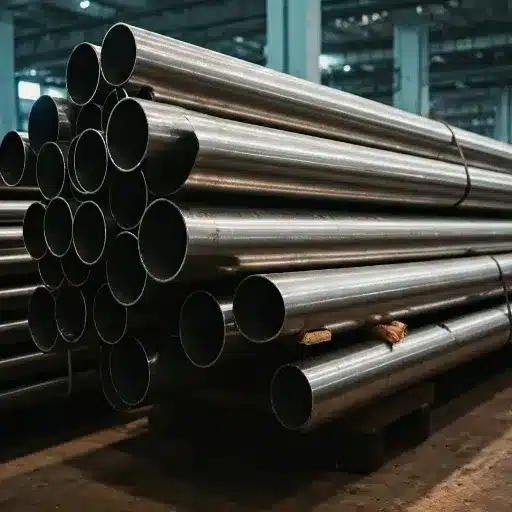
Impact of Annealing on Corrosion Resistance
Annealing is considered a major heat treatment process to which the corrosion resistance of a variety of metals is raised, with stainless steel and other alloys being the most prominent. During this procedure, the metal is heated to a predetermined point and then slowly cooled, which allows for the elimination of stresses within the metal as well as the development of the microstructure. This makes the whole process of getting rid of corrosion much easier by making the oxide layers, which act as barriers, more uniform.
Moreover, recent discoveries have shown that annealing not only maintains but even improves the passivation layer on stainless steel by enhancing its stability and thus making it resistant even to the most aggressive environments, such as those found at sea or in areas with high humidity. Nonetheless, the extent of the improvement is based on some factors such as the grade of the metal chosen, the temperature used for annealing, and the rate of cooling. One of the examples is the studies, which, among other things, show that optimum annealing results in the increase of pitting resistance of duplex stainless steels, which in turn leads to an increase in their applications in industries such as chemical processing and desalination. Thus, the continuous adaptation of annealing techniques along with newer data and project requirements guarantees that the materials subjected to harsh conditions will have the best possible durability and corrosion resistance.
🛡️ How Annealing Enhances Corrosion Resistance
- Eliminates internal stresses in the metal structure
- Creates more uniform oxide layers (protective barriers)
- Improves and stabilizes the passivation layer
- Increases pitting resistance in duplex stainless steels
- Enhances performance in marine and high-humidity environments
Role of Pickling in Enhancing Durability
Pickling is a major procedure in surface treatment used to improve metal longevity, especially stainless steels by doing away with their impurities, which include scale, rust, and oxides that have been produced either by heating or welding. The process consists of plunging the metal into a solution containing strong acids such as nitric or hydrofluoric acid, which is capable of cleaning the surface very well, and making the metal’s corrosion resistance good again. As of now, pickling is an especially important practice in places where metals are subjected to aggressive conditions because it assists in taking away the impurities that could lead to the weakening of the passivation layer thus boosting the overall life and performance. Moreover, the process of pickling when combined with passivation guarantees that the oxide layer protecting the metal has been reformed and this layer is now very resistant to pitting, crevice corrosion and any other kind of decay. By means of advanced pickling techniques that are appropriate for the requirements of contemporary industries, manufacturers can achieve a huge improvement in the trust and durability of their metal parts even in rough conditions.
💪 Pickling + Passivation = Maximum Durability
When pickling is combined with passivation, the protective oxide layer is reformed with enhanced resistance to:
- Pitting corrosion
- Crevice corrosion
- General surface decay
- Aggressive environmental conditions
Comparative Analysis of Pipes in Harsh Environments
When assessing the use of pipes in unfriendly environments, a number of factors such as the material composition, the level of rust resistance, the heat tolerance, and the operational life expectancy have to be taken into account. To a large extent, depending on the situation, the type of pipe chosen among the various materials might still be stainless steel pipes, which are the only ones environmental conditions and chemical toughest exposures can handle, because they are the highest in corrosion resistance and keep their integrity even under heavy stresses. For instance, the 316L grade of stainless steel is one of the best when it comes to resisting chloride-induced pitting, which is usually the case in marine places or chemical processing plants.
On the contrary, HDPE (high-density polyethylene) pipes are gaining a lot of popularity in the market as they are a requirement in the cost-effective and flexible solution category. Though their durability is less compared to stainless steel, HDPE pipes give good resistance to different kinds of chemicals, have tolerance for high levels of abrasion, and being lightest among the others makes installation more convenient.
In the long run, the factors that will dictate the choice of the pipe material will be the environmental conditions and the purpose for the pipe. If the application is one that needs the pipe to last long under harsh chemical or high-pressure conditions, then the choice is clearly stainless steel, as no other pipe material matches its corrosion resistance and structural strength. However, in less demanding conditions, where flexibility and low cost are of great importance, HDPE and other pipes made from polymers can be considered as a viable and economical alternative.
Applications of Annealed and Pickled Stainless Steel Pipes
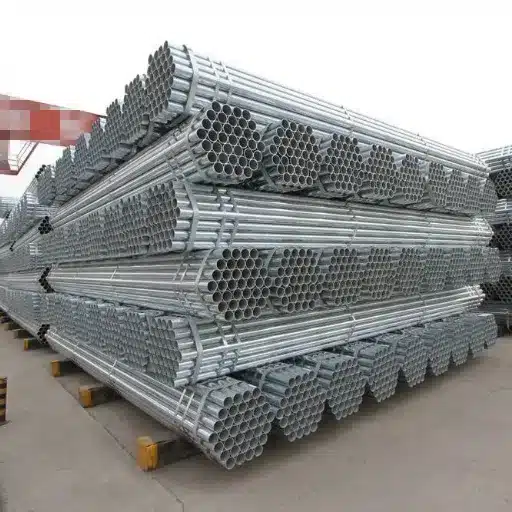
Oil and Gas Industry Requirements
The oil and gas industry has severe requirements and annealed and pickled stainless steel pipes are very important in the solutions offered by such an industry. The pipes are very much appreciated for the excellent resistance they possess towards corrosion which is especially the case in the challenging conditions mainly created during the drilling and transportation of natural gas and oil respectively. Extreme conditions of temperature, salty water, and harmful chemicals are the main factors that lead to the installation of pipes made of stainless steel which ultimately have the benefits of being durable and reliable for a long time. The most recent data indicate that the adoption of stainless steel has not only become a common practice but also the industry standard because of its ability to lessen the maintenance costs and reduce the downtime caused by the failure of the material to a minimum. Moreover, the development in the alloys’ compositions does not stop but strengthens the performance and makes the pipes to be always ahead of the needs of the energy sector. Their versatility in handling both upstream and downstream operations reveals a lot about their essentiality in the global energy infrastructure.
⚡ Oil & Gas Industry Benefits
- Withstands extreme temperature variations
- Resists corrosion from salty water and harsh chemicals
- Reduces maintenance costs significantly
- Minimizes downtime from material failure
- Suitable for both upstream and downstream operations
- Long-term durability and reliability
Use in Chemical Processing
The stainless-steel pipes have been playing an important role in chemical processing because of their outstanding characteristics such as being corrosion-resistant, high-temperature tolerant, and durable in extreme conditions. Already these features alone make the stainless steel pipes the only choice for transporting the most aggressive chemicals, acids, and other reactive substances in industrial applications. As per the latest industry observations, different grades of duplex stainless steel and special alloy variations made possible have increased their applications, leading to better strength with less in terms of material cost. Additionally, the easy upkeep and long life span of the pipes ensure that chemical plants can operate efficiently and safely even in very hard environments. This combo of features makes stainless steel a vital material for the chemical processing industry that can be relied upon for meeting the sector’s stringent requirements through performance.
🧪 Chemical Processing Applications
Perfect for transporting:
- Aggressive chemicals
- Industrial acids
- Reactive substances
- High-temperature process fluids
Heat Exchangers and Other Industrial Applications
The stainless steel is essential not only in the heat exchangers but also in other industrial equipment especially in the sectors that require a welded connection and a stronghold in terms of corrosion resistance. The heat exchangers are extremely important because they are responsible for the efficient transfer of heat during process flows like chemical production, power generation, and food processing. The combination of stainless steel’s high thermal conductivity, strength at high temperatures, and pressure resistance makes it the perfect material for these applications.
Also, the stainless steel is claimed to be in the reactors, tanks, and pipelines as a result of its non-reactive properties thus the safety and purity of the chemicals and other materials are maintained. The innovations in the production of stainless steel such as the development of better alloy formulations have on the other hand continued to enhance its performance under varying conditions. These traits not only increase the operational efficiency but also cut down on the long-term costs by lessening the need for downtime and replacement thus reinforcing the position of stainless steel as an essential material in industrial applications.
🏭 Industrial Applications Overview
Heat Exchangers
Efficient heat transfer in chemical production, power generation, food processing
Reactors & Tanks
Non-reactive properties maintain chemical purity and safety
Pipeline Systems
High thermal conductivity and pressure resistance
Food Processing
Hygienic, non-contaminating material for food safety
Frequently Asked Questions
What is the annealing process for stainless steel pipes?
Annealing of stainless steel pipes includes heating the metal slowly to a precise temperature and finally cooling it down very slowly. This heat treatment softens the metal and increases its ductility while at the same time, stress in the material is relieved. The pipes can also be pickled during the time of annealing to get rid of the oxide scale that has formed during the heating process. This way, not only a clean surface is obtained but also there is an enhancement in the resistance against corrosion which is critical for use in oil and gas industries, among others. The U.S. corrosion standards A312 specifically delineates the requirements for the mentioned pipes so that their quality is up to scratch.
How does pickling affect the surface finish of stainless steel tube?
Pickling is a chemical treatment that cleans up the surface of stainless steel tubes by getting rid of impurities and oxides. It results in a smooth and clean surface that not only improves the aesthetic but also the functional performance of the tubes. It is generally applied together with the annealing process to produce a bright annealed finish everyone desires for its corrosion resistance among other great qualities. Manufacturers apply rigorous quality control standards so that the pickled tubes have a high-precision surface finish that accommodates various applications like hydraulic systems and shipbuilding.
What are the benefits of using seamless stainless steel pipes?
Seamless stainless steel pipes are not produced with any welding, which means no risks of demerits caused by welded joints. This pipe type has excellent strength and longevity, so it is used for high-pressure applications in the oil and gas industry. Besides, you will have a smoother flow of liquids in absence of seams, hence reducing the chances of turbulence. Besides, different sizes and different finishes can be done on the seamless pipes. Bright annealed and pickled are some of the options where corrosion resistance and performance in general are enhanced. ASTM A312 lays down the criteria for seamless stainless steel pipes, which means they comply with industry standards.
What grade of stainless steel is commonly used for pipes in high-temperature applications?
316 stainless steel is widely used for high-temperature applications because of its superior mechanical properties and anti-corrosion characteristic. This is an alloy of austenitic stainless steel which, due to containing molybdenum, is particularly capable of dealing with the worst environments. Other than 316, also 304 stainless steel is used a lot but it would not be able to cope with the same level of conditions as 316. The choice is usually dependent on the application; the more such as high temperature or chemical erosion the less grade is a problem, among other factors. ASTM A312 is also the international standard for the production of these pipes, thus ensuring reliability and safety.
What is the significance of the diameter in stainless steel welded pipe?
The diameter of the welded pipe made of stainless steel is of utmost importance for the strength and flow capacity of the pipe. In situations where exact amounts are required – like hydraulic systems or boiler fittings – it’s very important to know the nominal diameter (OD). The size will have an impact on the pressure rating and that will also affect the overall functioning of the piping system. Certain standards such as ISO and ASTM prescribe the dimensions, so, therefore, installations will be compatible and safe. And, large diameters may force one to adopt a different method of manufacturing which could then become a factor in making a choice between seamless and welded pipe options.
How does annealing and pickling contribute to the durability of stainless steel fittings?
The forging of the annealing and pickling processes makes them a duo that is very essential in the making of stainless steel fittings. The process of annealing has the effect of optimum on the material’s mechanical properties whereby it can easily bear stress and fatigue without cracking or breaking. On the other hand, the surface impurities which might have been a potential source of corrosion are removed by pickling thus, the fittings could still keep their structure throughout the lifetime. These processes are often used in chemicals and thermally challenged industries. Manufacturers can, therefore, state that the product is not only a high-performance one but also that it is compliant with the industry standards by making systematic quality control during the production process.
Key Takeaways
- Annealing and pickling work together: Annealing increases ductility and reduces internal stress, while pickling removes impurities and restores corrosion resistance
- Material selection matters: 304 is versatile and cost-effective, 316L excels in marine environments, and Duplex offers superior strength
- Seamless vs. welded pipes: Choose seamless for high-pressure applications and welded for cost-effective, low-pressure systems
- Pipe schedules determine performance: SCH 10S for low-pressure applications, SCH 80S for heavy-duty industrial use
- Industry-specific requirements: Oil & gas, chemical processing, and heat exchanger applications demand specific grades and treatments
- Chromium content is crucial: Minimum 10.5% chromium creates the protective oxide layer that prevents rust and corrosion
Conclusion
Annealed and pickled stainless steel pipes represent a pinnacle of engineering excellence in materials science. The dual processes of annealing and pickling work synergistically to create pipes that not only meet but exceed the demanding requirements of modern industrial applications. From the oil and gas sector to chemical processing plants, from heat exchangers to marine environments, these specially treated pipes deliver unmatched performance, durability, and reliability.
Understanding the distinctions between seamless and welded pipes, recognizing the unique properties of different stainless steel grades, and appreciating the significance of pipe schedules are all critical factors in making informed decisions for your specific application. The investment in high-quality annealed and pickled stainless steel pipes pays dividends through reduced maintenance costs, minimized downtime, and extended operational lifespans.
As industries continue to push the boundaries of performance in increasingly harsh environments, the role of properly treated stainless steel pipes becomes ever more vital. Whether you’re designing a new system or upgrading existing infrastructure, choosing annealed and pickled stainless steel pipes ensures that your project is built on a foundation of strength, resilience, and long-term value.
📚 Reference Sources
- Academia.edu: A comprehensive handbook discussing the surface treatment of stainless steels, including pickling processes to enhance hygiene and corrosion resistance. Pickling Handbook: Surface Treatment of Stainless Steels
- Harvard ADS (Astrophysics Data System): A study on the thermal and mechanical treatment of semiaustenitic stainless steel, focusing on the annealed condition and its applications. Thermal and Mechanical Treatment for Precipitation
- Karlsruhe Institute of Technology (KIT): Research on material corrosion under extreme conditions, comparing the performance of annealed and cold-worked stainless steels. The Material Corrosion under Supercritical and High-Temperature Conditions

